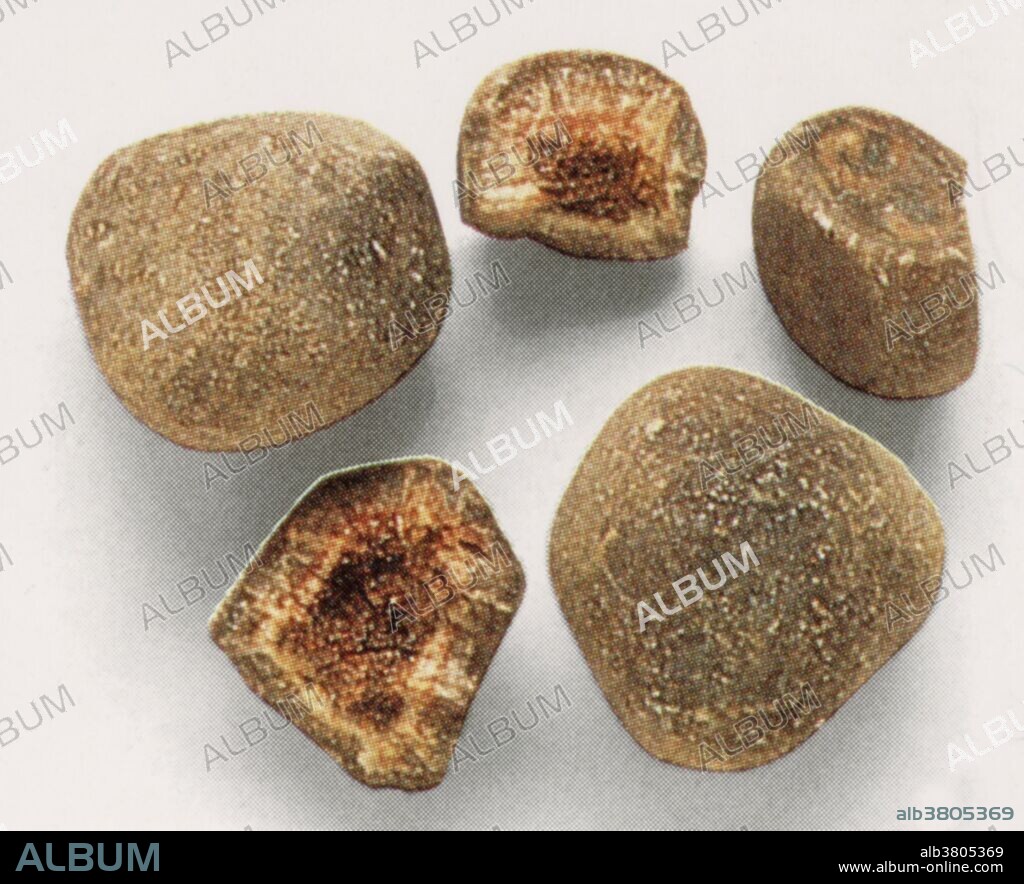alb3805369
Bezoar Stones, Medieval Antidote for Poisoning

|
Añadir a otro lightbox |
|
Añadir a otro lightbox |



¿Ya tienes cuenta? Iniciar sesión
¿No tienes cuenta? Regístrate
Compra esta imagen.
Selecciona el uso:

Título:
Bezoar Stones, Medieval Antidote for Poisoning
Descripción:
Ver traducción automática
Bezoar Stones. These natural rocklike objects form in the stomachs of animals, such as goats, sheep, and cows, and were once said to have magical powers against disease. Human stones from the bladder, kidney, and gall bladder were similarly prized. A bezoar is a mass found trapped in the gastrointestinal system, though it can occur in other locations. Bezoars were sought because they were believed to have the power of a universal antidote against any poison. It was believed that a drinking glass which contained a bezoar would neutralize any poison poured into it. The word bezoar comes from the Persian pad-zahr, which literally means "antidote". The Andalusian physician Ibn Zuhr, known in the West as Avenzoar, is thought to have made the earliest description of bezoar stones as medicinal items. In 1575, the surgeon Ambroise Paré proved that the bezoar stone could not cure all poisons as was commonly believed at the time.
Crédito:
Album / Science Source / New York Public Library
Autorizaciones:
Tamaño imagen:
3444 x 2795 px | 27.5 MB
Tamaño impresión:
29.2 x 23.7 cm | 11.5 x 9.3 in (300 dpi)


 Pinterest
Pinterest Twitter
Twitter Facebook
Facebook Copiar enlace
Copiar enlace Email
Email
